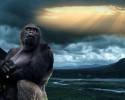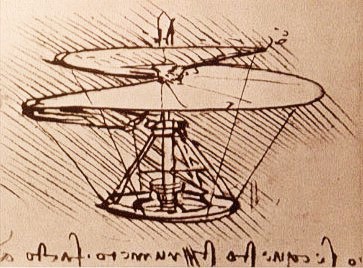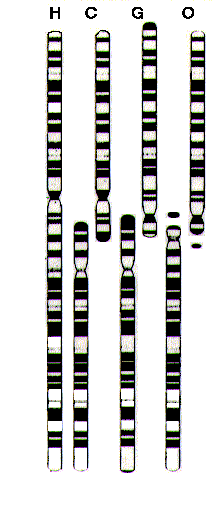This entry is part of a series. For a bit of an introduction and an index of all entries in the series, go here.
 This installment covers Chapter 14, Complications.
This installment covers Chapter 14, Complications.
Yet again, McCann shows his misunderstanding in thinking of evolution as a ladder. First, he quotes a scientist discussing fossil whales and their teeth, and then goes on to give his interpretation.
Sir J. W. Dawson ("Chain of Life," p. 222), says: "The oldest of the whales are in their dentition more perfect than any of their successors, since their teeth are each implanted by two roots, and have serrated crowns, like those of the seals. The great Eocene whales of the South Atlantic which have these characters attained the length of seventy feet and are undoubtedly the first of the whales in rank as well as in time. This is, perhaps, one of the most difficult facts to explain on the theory of evolution."
They start you off back there with a little squirrel-like creature when the whale was a mammal seventy feet in length, more perfect according to the bewilderment of evolution than it is today, and they ask you to believe that the little squirrel-like creature was the father of the modern horse.
There were the Eocene Eohippus and the Eocene whale. The Eocene Eohippus they say has been coming up, up, up, under the irresistible and unyielding pressure of evolution and is now the horse. What, then, happened to that unyielding and irresistible pressure that it failed to carry along with it the Eocene whale which, instead of coming up, up, up, in comfortable accommodation to the indispensable requirements of evolution, has conducted itself, perhaps because it had flippers, with so much flippant indifference to the pre-opinions, pre-assumptions and prerequisites of those who would have had it reverse its procedure?
They start you off with something very small as the progenitor of the Eocene Eohippus, but the Eocene Eohippus and the Eocene whale had a common ancestor. Why, therefore, was the progenitor of the little squirrel-like creature lagging along the line of evolution while the whale was attaining a length of seventy feet? Everything went forward very nicely with the little Eocene squirrel-like creature, yet we see that something must have stopped altogether while its contemporary, the Eocene whale, was making such monstrous advance. But this is the very apex of paradox, for we see that the little Eocene squirrel-like creature didn't stop at all, but kept going right on, whereas the monstrous advance of its contemporary, the Eocene whale, is seen to be no advance of any kind whatsoever but in truth a sprag in the cogs of evolution.(McCann 181-183)
One of the most important factors contributing to natural selection is environment. It should be obvious that whales and horses evolved in very different environments, so that traits that would have been favored in one lineage may not have been beneficial in the other. But even among each lineage, the different groups within the lineage lived in different environments. Early horse ancestors were forest dwellers. There are many reasons why natural selection may have favored a small size in those populations, such as lower food requirements, ease in getting around through the trees or in the branches, or more places to hide from predators. Modern horses and zebras live on the plains, where large size is by itself a defense from predators, and also allows the animals to run faster.
Modern whales do have very different teeth than their ancestors. In the dolphins and toothed whales, the teeth are actually simpler than most mammal's teeth. They're simple conical teeth. But recall that whales are aquatic predators. They catch slippery fish and eat them whole. They don't need molars to grind up tough plant material. There's also the possibility that the regular sizing and spacing of the teeth allows them to be used as arrays, to help the whales with echolocation.
Then, of course, there are the baleen whales. They have no teeth at all, but it's because they've evolved a complex body part that allows them to filter feed better than plain teeth would have. And yes, scientists have found a transitional form that has both teeth and baleen (more info on baleen whale evolution).
This following paragraph is exactly what common descent means.
Its [a bat's] wings are like our own human hands. That is why they had to start the first horse with five toes. The evolutionist sees modifications of the same structure in the paws of cats and dogs, the hoofs of horse and cattle, the flippers of whales and porpoises, etc., yet the foot of the ape is scarcely so much a foot as a HAND! (McCann 183)
But this? Not so much.
In order, by the slowly acquired accumulation of infinitesimal differences in gigantic periods of time, to develop the primitive generalized fore-limb from which all these diverse forms evolved, the bat before acquiring a wing capable of flight would have had to have countless hosts of ancestors, millions of them, and man should be not a descendant of the ape so much as a cross between a tortoise and a lizard. (McCann 184)
Our ancient, ancient tetrapod ancestor had five toes on each foot, both front and back. Somehow this number became set in development (not that it's impossible to have a different number, but that the change is rather unlikely, particularly an increase). Subsequently, nearly all descendants of that ancient tetrapod ancestor have five toes on each foot. A bat wing is evolved from that ancient limb, as is our arm, a lizard's leg, a dinosaur's claw, or a horse's hoof. All of us subsequent descendants are cousins.
On some issues that McCann's brought up, I haven't been familiar enough with the state of science during his time to know whether science really was lacking in those areas. But on this one, there's no excuse.
But perhaps the bat is an exception among flying things? On the contrary, the same holds good of other flying creatures - birds, pterodactyles (flying lizards), etc. No trace of any of these creatures is found while their wings were in the making. (McCann 184)
Archaeopteryx was discovered in 1861. Surey, McCann should have heard of that, especially if he was doing any research for his book. At the very least, he could have brought it up to discount it, considering how many people have used it as an example of the very thing McCann is asking for.
Ah. A creationist screed just wouldn't be complete without conflating evolution with abiogenesis.
All this positive evidence, all this negative evidence, all this lack of evidence of any kind should demonstrate the folly of the theory that the whole organic world originated in one primitive cell under an accidental chemic urge that has never repeated itself. Moreover, it should show the folly of the theory that the animal and vegetable kingdoms emerged from the same ancestral cell. (McCann 187)
Abiogenesis is not the same thing as evolution. As I already wrote in a previous part of this series, the origin of life is as relevant to the study of evolution as the origin of the atmosphere is to the study of meteorology.
There is, however, a very good reason why we don't see new life springing up any more - advanced life is already here. When life was first getting started on this planet, it had no living competition. There were no hungry critters to gobble up organic molecules floating about, or to gobble up any incipient life. Now, bacteria are everywhere. There's practically no nook or cranny with the conditions where new life could get started that isn't already inhabited by bacteria.
After as much hoopla as there was over punctuated equilibrium when Gould pushed it, I thought it was interesting to read this.
Struck by the amazing lack of uniformity in what is called "the rate of evolution," its proponents must look to De Vries for help. De Vries believed there were periods of rapid change alternating with periods of fixed stability in the history of species. Consequently we find the idea of "periodic advances or waves of evolution." (McCann 188)
Keep in mind though, that De Vries was advocating saltationism, which was a bit different than punctuated equilibrium. When punctuated equilibrium advocates talk of "periods of rapid change alternating with periods of fixed stability", the 'rapid' is only in geologic terms. If you could somehow gather specimens from every generation during the 'rapid change' period, every generation would still look very much like the previous generation, with only slight differences. It's only the accumulation of many of those slight differences over many generations that results in a big change in the population. Saltationists, on the other hand, would predict that there would be a very noticeable difference from one generation to the next.
Saltation, as far as we can tell, doesn't happen. Even if, through the most unlikely of scenarios, a 'hopeful monster' were to be born, it would have no partner to mate with. Punctuated equilibrium, however, does appear to happen. The history of life on this planet seems to be a mix of punctuated equilibrium and gradualism.
I thought it was interesting to read this.
The significance of another admission of this modern Princeton professor [Conklin] is overwhelming. Announcing that one-celled organisms reached their utmost limits of complexity millions of years ago, he crosses the stream of life and reviews the higher animals and plants in all their multiplication of cells, tissues, organs, systems, metameres, and zooids which, he says, p. 20, "enormously increased the possibilities of specialization within each of these larger units of organization, BUT FOR MILLIONS OF YEARS THERE HAS BEEN LITTLE FURTHER PROGRESS IN THIS DIRECTION OF MULTIPLICITY AND COMPLEXITY." (McCann 188-189)
McCann's response shows the typical ego that many people have, considering humans to be separate from the rest of the animal kingdom.
Whence, then, came man with his extraordinary complexity of organization? (McCann 189)
First, I'll refute McCann's response, by simply quoting again something I'd already quoted in a previous part of this series, part of a recent article in the New York Times by primatologist Frans de Waal.
In the field of cognition, the march towards continuity between human and animal has been inexorable... True, humanity never runs out of claims of what sets it apart, but it is a rare uniqueness claim that holds up for over a decade. This is why we don't hear anymore that only humans make tools, imitate, think ahead, have culture, are self-aware, or adopt another's point of view.
If we consider our species without letting ourselves be blinded by the technical advances of the last few millennia, we see a creature of flesh and blood with a brain that, albeit three times larger than a chimpanzee's, doesn't contain any new parts. Even our vaunted prefrontal cortex turns out to be of typical size: recent neuron-counting techniques classify the human brain as a linearly scaled-up monkey brain. No one doubts the superiority of our intellect, but we have no basic wants or needs that are not also present in our close relatives. I interact on a daily basis with monkeys and apes, which just like us strive for power, enjoy sex, want security and affection, kill over territory, and value trust and cooperation. Yes, we use cell phones and fly airplanes, but our psychological make-up remains that of a social primate. Even the posturing and deal-making among the alpha males in Washington is nothing out of the ordinary.
Aside from having a big brain, humans are no more complex than any other mammal. (Actually, I always thought of birds as being more advanced than mammals in many ways, what with their feathers, air sac lung system, superior vision, etc.). In fact, when you get down to genetics, we're not even all that different from single celled eukaryotes or bacteria. All the functions that have to be carried out in our cells have to be carried out in those single celled organisms as well. Sure, we have organs and specialized tissues, but even bacteria can form colonies and have some degree of specialization. I'm not trying to say that we're not more complex than a bacterium. I think we are. I'm just pointing out that the difference isn't as big as some people would think. (On a related note, here's an entry on the evolution of complexity.)
McCann did make a good point that seems to be lost in the current popular notion of evolution, where so many people emphasize genetics in development, ignoring environment.
The composition of the soil determines largely the character of the plant's development, exerting a vast influence upon the variety of the species, the different individuals of which are influenced accordingly. (McCann 190)
In fact, I wrote about this in a previous entry of mine, Genetic Determinism. We're certainly the products of evolution, but we're also the products of our environment.
Proceed to Chapter 15
 This installment covers Chapter 16, Bateson - A Brilliant Light.
This installment covers Chapter 16, Bateson - A Brilliant Light.




 Well, it's the start of a new month, so it's time to browse through the server logs again to come up with the list of the top most popular pages on this site from last month. There were no surprises - everything on the list had made it before, though there was a bit of shuffling around. The
Well, it's the start of a new month, so it's time to browse through the server logs again to come up with the list of the top most popular pages on this site from last month. There were no surprises - everything on the list had made it before, though there was a bit of shuffling around. The